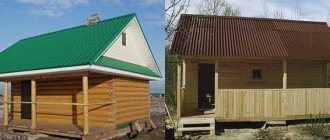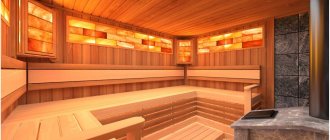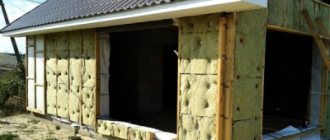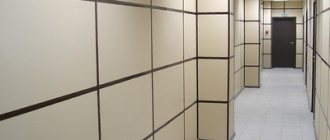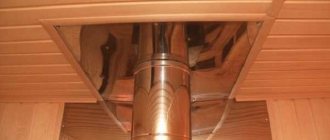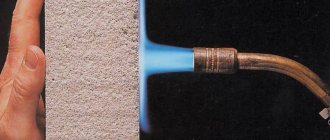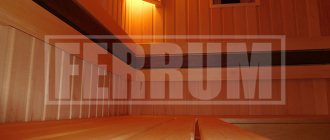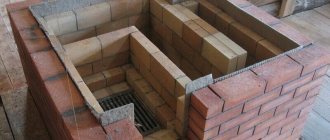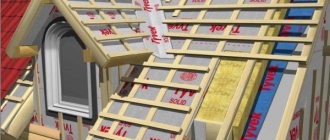Beton-House.com
Website about concrete: construction, characteristics, design. We combine the experience of professionals and private craftsmen in one place
Aerated concrete block and foam block
Both aerated concrete and foam block are varieties of cellular concrete. Despite all the similarities, there are significant differences between them, which is why materials often become the subject of debate when choosing the optimal products for construction.
So let's figure out what's better: aerated concrete or foam block? Which of these options is worth highlighting, and due to what indicators?
- Physical, mechanical and technical characteristics
- Production of aerated concrete
The concept of foam block
The foam concrete block is characterized, first of all, by its porous structure and the special way it is formed during the manufacturing process. This happens as a result of adding a special component to the solution - a foaming agent, which allows the mixture to swell.
Let's consider what characteristics this output material has.
Basic properties and qualities
To make a full comparison, it is worth studying the basic set of material qualities that indicate the practicality and durability of the future structure. The set of physical, mechanical and technical properties of foam concrete looks like this:
Properties of foam concrete:
| Name | Meaning |
| Frost resistance | 35 to 80 cycles |
| Dry thermal conductivity | From 0.09 for thermal insulating foam concrete to 0.38 for structural |
| Strength kg/cm2 | 15-25 |
| Density grade | 400-1200 |
| Water absorption | 10-16% by weight |
Now let’s analyze the practical and operational characteristics using the table.
Other characteristics of foam concrete:
| Characteristic name | Meaning |
| Shrinkage | From 0.5 mm/m2 |
| Price category of material | The material is one of the most inexpensive |
| Construction speed | High enough |
| Soundproofing | Average level |
| Vapor permeability | Capable of vapor permeability |
| Environmental indicator | 2 |
| Fire resistance | Does not burn |
In general, all of the above indicators - or rather, their values - are quite sufficient to satisfy the basic requirements of most developers. However, it is still too early to draw conclusions.
Classification and scope of application
In accordance with GOST, foam concrete has several classifications based on various characteristics of products, their composition and production variability.
Depending on the density of the material, foam concrete can be:
- Thermal insulation. It has a minimum density, which varies up to D500. Such foam concrete is used as insulation, since it cannot withstand any significant loads;
- Structural and thermal insulation. Its strength is much higher: 500-900. It is used in the construction of walls and partitions;
- Structural foam concrete is the most durable, the indicator is equal to a numerical value from 1000 to 1200. It is used in the construction of buildings several floors high. It can withstand quite significant loads.
Characteristics of foam blocks of different densities
You can also select structurally porous foam concrete. Its density can reach D1600. GOST does not regulate this type of material. Its release is limited to individual orders.
In addition to the above areas of application, foam concrete is also used:
- When filling the frame of reinforced concrete structures;
- Monolithic foam concrete is used for constructing screeds:
- When constructing structures using formwork;
- When insulating the roof, and in many other cases.
Foam concrete is divided depending on the category of product accuracy. Let's look at it using a table.
Accuracy categories of foam concrete blocks in accordance with GOST 21520-89:
| Name of deviation | Blocks of 1st accuracy category | Blocks of 2nd accuracy category | Blocks 3 accuracy category |
| By thickness and length | No more than 1 mm | No more than 3 mm | No more than 5 mm |
| By height | No more than 2 mm | No more than 4 mm | No more than 6 mm |
| Diagonally | 2 mm | 4 mm | 6 mm |
| Faces and edges | 1 mm | 3 mm | 5 mm |
| Broken corners (no more than 2 on one product) | Up to 5 mm | Up to 10 mm | Up to 15 mm |
Also, in accordance with GOST 25484-89, the material is divided into:
- Products of the autoclave or synthesis method of hardening;
- Products of non-autoclave or hydration curing method.
In the first case, the blocks are processed under high temperature and pressure in special machines - autoclaves. Non-autoclaved foam concrete hardens under natural conditions. The temperature does not exceed 100 degrees.
The differences in finished products lie in appearance, block geometry, and quality characteristics. It is also worth considering: in handicraft and home production, the proportions of raw materials may differ, which will undoubtedly lead to changes in technical indicators.
Depending on the type of silica component, products can be:
- On sand, most often quartz;
- On the ashes;
- On other secondary industrial products.
According to the type of main binder, the material can be:
- On cement;
- On the sand;
- On the ashes;
- On slag;
- On mixed binder.
At the same time, the concentration of the main component of the total mass is 15-50%. It is worth noting that some manufacturers produce foam concrete blocks with a facing side. They do not require subsequent external finishing.
Strengths and weaknesses of the material
When comparing aerated concrete and foam block, it is necessary to consider all the advantages and disadvantages of the materials, which will help eliminate undesirable characteristics of the future structure.
The advantages of foam concrete include:
- The lightness of the material eliminates the heavy load on the foundation;
- Ease of processing partly guarantees high construction speed;
- Foam concrete is made from a mixture of sand, cement, water and foaming agent. These components do not have a harmful effect on the environment and humans, which means that the products are environmentally friendly. The numerical indicator of environmental friendliness is 2-um, which is only 1 point higher than that of wood.
- Fire resistance is another significant plus. Foam concrete does not support fire.
- Price. The products are among the most inexpensive. And if you compare them with the cost of bricks, then construction costs when using this material will be less by about 15%.
- Foam concrete is quite durable.
- Frost resistance of products varies from 35 cycles of freezing and thawing, which is undoubtedly a fairly good indicator.
- The advantages also include the ability to make blocks with your own hands. This may save your budget a little. Those wishing to organize a small business will be able to try themselves as a manufacturer. We'll talk about production profitability later.
- Wide range of materials, large selection of sizes.
- The closed pore structure is a significant advantage. Due to this, foam concrete absorbs moisture somewhat less than some wall materials.
- Foam concrete is not exposed to the biological environment, unlike, for example, wooden buildings. It does not form mold and mildew.
Pros of foam concrete
The main disadvantages are as follows:
- First of all, the material is fragile. This is especially true when transporting cargo and carrying out construction work. Products are easy to cut, but also easy to break and crumble.
- When fixing elements to a wall made of aerated concrete, it is necessary to use only specialized hardware. This is directly related to the special structure of the material. If you want to secure heavy elements with a high level of pullout, the fixation units will have to be planned and strengthened in advance.
- The presence of handicraft industries increases the chances of purchasing low-quality products.
- The ratio of strength and thermal conductivity is somewhat worse than that of other wall materials.
- The bending strength is also relatively low.
Building settlement is a common and inevitable phenomenon.
Ecological cleanliness
Aluminum powder used in the manufacture of gas-filled products has a negative effect on people. During production, 0.4 kg of aluminum powder is added to 1 cubic meter of the mixture. However, during manufacturing, a chemical reaction occurs, which results in the gas generation of aluminum oxide and the formation of air cells. They double the volume of the array. There is no metallic aluminum in the finished gas-filled composite. This ensures its harmlessness to others and environmental friendliness. Foam blocks are made from environmentally friendly raw materials and do not have a negative impact on the health of others.
Characteristics of aerated concrete
Now it’s time to analyze the characteristics of aerated concrete and products made from it. Let's start by identifying the main qualities and properties of the material that determine its competitiveness in the building materials market.
Physical, mechanical and technical characteristics
Let's use the table.
Properties and qualities:
| Indicator name | Meaning and comments |
| Dry thermal conductivity | From 0.09 for thermal insulating aerated concrete |
| Frost resistance | From 35 to 150 cycles |
| Strength grade | From B 1.5 in accordance with GOST for non-autoclaved aerated concrete, the average at D500 is B3.5 |
| Density | 300-1200 |
| Shrinkage | 0.3 mm/m2 |
| Water absorption | About 25% |
| Recommended wall thickness | From 0.4 |
| Environmental friendliness | 2 |
| Fire resistance | Does not burn, withstands up to 120 minutes of exposure to high temperatures |
Types of aerated concrete
Since aerated concrete and foam concrete blocks are types of products made from cellular concrete, the classification, in accordance with GOST, applies to them the same. Therefore, there is no point in analyzing it in detail again.
Let's just look at the differences in the performance of autoclaved and non-autoclaved aerated concrete using a table, since some of them differ significantly.
Aerated concrete blocks characteristics: comparison of autoclaved and non-autoclaved products:
| Characteristic | Its significance for synthetic hardening aerated concrete | Its significance for hydration-hardening aerated concrete |
| Vapor permeability | 0,2 | 0,18 |
| Frost resistance | 35-150 cycles | 15-35 cycles |
| Shrinkage | 0.3 mm/m2 | From 0.4 mm/m2 |
| Strength grade | B2.5-B5 | B1.5-B2.5 |
| Thermal conductivity | From 0.09 | From 1.7 |
| External wall thickness | From 400 mm | From 650 mm |
| Durability promised by manufacturers | Up to 200 years | Up to 50 – 60 years old |
Since aerated concrete is also divided into types depending on density, let's analyze how the thermal conductivity of the products changes.
Thermal conductivity, density: ratios and connection:
| Type of aerated concrete | Density | Thermal conductivity of products in a dry state. |
| Structural | D400 | 0,09-0,1 |
| D500 | 0,1-0,12 | |
| Structural and thermal insulation | D500 | 0,13-0,14 |
| D600 | 0,15-0,18 | |
| D700 | 0,18-0,21 | |
| D800 | 0,21-0,22 | |
| D900 | 0,22-0,23 | |
| Structural | D1000 | 0,23-0,29 |
| D1100 | 0,26-0,34 | |
| D1200 | 0,29-0,38 |
Advantages and disadvantages of products and buildings erected from them
Some advantages of aerated concrete are extremely similar to the advantages of foam concrete products. These include:
- Low weight of the material, which allows for some savings on the construction of the foundation due to the absence of serious loads;
- Ease of processing. Aerated concrete is also easy to saw, cut and sand. At the same time, unlike, for example, a ceramic block, highly specialized equipment is not required. You can use a regular hacksaw or any other tool suitable for such purposes.
- Due to the presence of the above characteristics - high construction speed.
- Environmental friendliness and fire resistance are also characteristic of aerated concrete.
- High production efficiency, low cost of products.
- Possibility of almost any interior and exterior decoration, subject to technology and technical compatibility.
- An indicator of frost resistance that is enviable for other wall materials. Some manufacturers promise up to 150 freeze-thaw cycles, and a service life of up to 200 years.
- High strength characteristics, sufficient for the construction of a building of several floors and, at the same time, low thermal conductivity.
- Resistance to atmospheric and partly biological effects.
Advantages of aerated concrete
The disadvantages boil down to the following:
- Hygroscopicity of the material. Aerated concrete absorbs moisture better than other products. It has an open pore structure, which only enhances this ability.
This is especially fraught for products during periods of predominance of negative temperatures. When moisture can crystallize and begin to destroy the block from the inside.
Note! To avoid negative consequences, a wall made of aerated concrete requires technically correct finishing both inside and outside the building.
- The situation with hardware is the same as in the case of foam concrete. The structure of the material is similar, so when fixing elements, developers face the same problem.
- Fragility is also characteristic of aerated concrete. It requires careful handling.
- Shrinkage. It is not uncommon for cracks to appear on finished walls.
This is where the main disadvantages end. As you can see, there are still more advantages, and most of the weaknesses can be leveled out with the help of proper finishing and adherence to wall construction techniques.
Visual differences
If you compare the structure of the blocks with the naked eye, then pay attention to the larger pores of the foam concrete. The following differences in color and structure of materials are clearly visible:
- a smooth surface with a gray tint is characteristic of foam blocks;
- gas silicate has a textured, rough surface and is white in color.
You can conduct an experiment yourself. To do this, break off a small piece from the gas silicate or foam block and place it in a container of water. The first one, which has open pores, will quickly sink after absorbing moisture. Foam concrete will float on the surface for some time, as it weakly absorbs moisture. Thus, we figured out which material is more moisture resistant.
Comparison of properties and qualities of materials
Since we have already examined all the basic properties and qualities of materials, it’s time to analyze them and find out what is better: aerated concrete blocks or foam concrete blocks?
What's better? Comparison of materials
- Thermal conductivity in comparison between “aerated concrete and foam block”. There is no obvious winner in this indicator. Both one and the other material have similar numerical values. The gas block gains quite a bit in the strength-thermal conductivity ratio.
- Frost resistance. In this case, aerated concrete definitely wins the palm. It is significantly superior to its competitor in its ability to withstand a large number of freezing and thawing cycles. This is especially true for autoclaved products.
- The environmental friendliness and fire resistance of the materials are the same.
- The indicators of vapor permeability and construction speed are also similar. Both products are easy to process and have impressive sizes. Allowing the construction of a structure quickly enough.
- But the block geometry is better with autoclaved aerated concrete.
- Foam concrete is significantly ahead of the latter in moisture absorption, which is directly related to the closed pore structure. It absorbs less moisture.
- The sound insulation characteristics of aerated concrete are somewhat better.
- If we talk about appearance, then, according to developers, aerated concrete looks more attractive.
- What is cheaper: foam block or aerated concrete? Definitely a foam block. The price difference is not big. But still she exists.
- The most significant differences between these materials lie in their composition and method of pore formation. The porous structure of foam concrete can be achieved by introducing a blowing agent into the solution. The cells of aerated concrete are obtained as a result of a chemical reaction of lime and aluminum powder, which acts as a gas generator.
Composition of foam concrete: water, cement, sand, foaming agent. Aerated concrete: lime, sand, cement and aluminum powder (or its substitutes).
- As for the variability of finishing, as already mentioned, there can be a lot of options for both materials. The main thing is to strictly adhere to the rules of application and installation technology. Interior and exterior decoration must be technically compatible.
Advice! If the outside of the block is faced with brick without installing a ventilated façade close to the wall, then the inside finishing must be sealed. This is due to the fact that in this case, moisture and vapors formed in the room should not get into the layer of the wall made of block and brick. Simply put, it is necessary to exclude the possibility of condensation accumulation - and, as a consequence, its negative impact.
- Shrinkage is more typical for foam concrete. Aerated concrete also shrinks, but the numerical indicator is still lower.
- If you compare the recommended wall thickness, it may be smaller for aerated concrete. For foam concrete this is 63 cm, and for aerated concrete it is at least 40 cm.
- It is also worth noting that fragility is characteristic of both products - this is their common drawback. The same applies to fixing fasteners.
- Standard product sizes are also similar. In their assortment they have both wall and partition blocks.
- Foam concrete is distinguished by the presence of products with cladding that do not require further finishing. Aerated concrete cannot boast of their presence.
- Separately, I would like to note the fact that when finishing both materials, additional costs will be required for surface processing and reinforcement. The fact is that both aerated concrete blocks and foam concrete blocks are characterized by low adhesion to finishing materials. This necessitates priming and reinforcing the surface.
Foam blocks aerated concrete blocks comparison
Aerated concrete, as follows from the table, still wins in a greater number of characteristics. However, if low cost and moisture absorption, for example, are most important to you, then foam concrete is just what you need. Therefore, when choosing, you should be guided, first of all, by individual wishes and requirements for the future construction.
Features of cellular concrete production technology
Traditional materials for building a private house are brick and wood (timber or rounded logs). Cellular concrete appeared only in the last century; since then, the technology for its production has improved slightly, but has generally remained unchanged. Cellular concrete is a composition that combines the advantages of wood, stone and brick. They can be used for the construction of load-bearing walls, internal partitions, and they can be used as insulation material.
| Foam concrete | Aerated concrete |
When considering what is better for construction, foam concrete or aerated concrete, it should be noted that in this category all materials differ in two indicators - density and porosity. The more pores in a block, the lower its density. And the strength also decreases. But the energy-saving properties increase. Therefore, materials with the highest porosity are used for thermal insulation - they cannot bear the load as load-bearing structures.
All cellular concretes have the following properties:
• environmental cleanliness and safety;
• low thermal conductivity (hence the high thermal insulation properties);
• ease of processing, including using hand tools;
• fire safety;
• good sound insulation.
Cellular concrete is a whole group of materials. Let's compare and consider the advantages and disadvantages of foam concrete and aerated concrete - the two most popular materials in this category.
Calculation of aerated concrete blocks and glue
| ROOM PARAMETERS: | |
| Wall height (m): | |
| External walls: | |
| Density class: | |
| Wall length (perimeter) (m): | |
| Thickness of walls (block)*: | |
| Area of door and window openings (m2): | |
| PARTITIONS: | |
| Density class: | |
| Length of partition walls (perimeter): | |
| Thickness of partition walls: | |
| Area of door and window openings (m2): | |
| Total per room: | |
| APPROXIMATE VOLUME OF BLOCKS: 0 m3 | |
| VOLUME OF PARTITIONS: 0 m3 | |
| NUMBER OF GLUE BAGS**: 0 pcs. | |
| * - wall thickness according to the project ** - glue consumption: 25 kg per 1 m3 of aerated concrete blocks with an adhesive layer thickness of no more than 3 mm and block size 600x375x250. | |
Weight
The mass of each individual foam block can be found by multiplying its volume by the density specified by the manufacturer. A block of standard dimensions 600x300x200 mm has a volume of 0.036 m3, so with a foam concrete density of 650 kg/m3, it will weigh 23.4 kg. A more durable version of the same parameters will weigh around 40 kg, the lightest – 10 kg.
Aerated block is also a fairly lightweight material, its weight is three times less than a brick of the same parameters. Most often you can find the following sizes: 600x200x300 mm, 600x250x250. On average, the weight of a 600×300×200 gas block is 20 – 23 kg.
Technology for laying block products made of foam and aerated concrete
The technology for laying these materials is extremely similar to each other, so let’s briefly look at the general principles of constructing walls from foam and aerated concrete:
- Laying must be done on a flat surface. If there are any irregularities or defects, they are corrected.
- The first blocks are laid in the corners. They will serve as guidelines in the future.
- A thread is pulled between them.
- It is recommended to lay the first row using mortar for better adhesion to the base.
- Next, the entire first row is laid.
- If there remains a gap that is unequal in size to the block, the product should be cut to the required size using a suitable tool.
- The second row begins to be laid with an offset of approximately 25-30%.
- Experts advise building the wall from this point on using specialized glue. The thickness of the layer will be smaller, and, therefore, the cold bridges will be reduced, which, in turn, will contribute to better heat retention in the future room.
- Adjustments are made using a building level and a rubber hammer. It is quite heavy, but at the same time it will not cause mechanical damage to products if used correctly.
- The first and every 4th row are reinforced.
- After completing the masonry of the walls, it is recommended to install an armored belt.
Tools necessary for the construction of walls made of foam and gas blocks
The video in this article contains complete information about the principles of laying products from both materials.
Scope of application
When constructing a low-rise building, foam concrete is used. It is used in construction:
- internal partitions;
- capital walls;
- various types of enclosing structures.
Taking into account the characteristics of the materials, foam blocks can be used to construct load-bearing walls of buildings with no more than 3 floors.
Foam concrete is an environmentally friendly material
Gas silicate is widely used in construction. It is suitable for the following purposes:
- Construction of building partitions.
- Construction of capital walls.
- Formation of monolithic structures.
- Construction of buildings with increased number of storeys, subject to the use of reinforcement belts.
Calculation of the number of foam blocks
| Selection of block size, LxHxD | |
| Total length of walls, meters | |
| Average height of walls, meters | |
| Total area of window and door openings, m2 | |
| Number of blocks: | m3 | PC. |
| Number of blocks multiple to pallet: | m3 | PC. |
| Number of blocks per pallet: | ||
| Number of pallets: | ||
Builder tips
When choosing gas silicate or foam concrete, you need to know what to look for and how to work with these materials correctly. Advice from experts can help with this.
What to look for when choosing a material
- Color - the blocks must have a uniform grayish color; the color can be darker or lighter, but always gray. If the color is white or has pink, purple, blue, etc. The tide is low, these blocks are not worth taking.
- Appearance - the blocks must have a flat, smooth surface, without various defects - cracks, chips, bulges and other irregularities. Place one block on top of the other, they should fit snugly against each other.
- Certificate of quality - be sure to ask the seller for documents for the product. If he refuses, most likely the material is handicraft and of poor quality.
- The shape and structure of the bubbles are only round and not connected to each other.
- Strength brand - first, decide what you need the material for. If used for insulation, take blocks up to D 500; if for construction, a higher density is needed.
Tips for use:
- Foam block is a fragile material, so try to act carefully when transporting and unloading;
- When laying gas silicate and foam blocks, it is better to abandon conventional cement mortar. It is worth using a special adhesive for cellular concrete. It is much stronger, the layer is thin, so cold “bridges” do not form.
- Before applying plaster to the surface of the blocks, it is imperative to lay a reinforcing mesh, otherwise the finish will quickly fall off.
- After purchasing foam concrete, leave the blocks to rest for several weeks; a fresh product gains strength after a month of aging.
It’s up to you to decide what material to use; the main thing is to make a responsible choice. Answering the question what is the difference between gas silicate blocks and foam blocks, we cannot say with confidence that there are strong differences.
The characteristics of the materials are similar, there are no obvious differences. The main thing that can be highlighted is that foam concrete cannot be used in multi-story construction.
Main results
Aerated concrete blocks and foam concrete blocks are a type of cellular concrete. They have similar properties and qualities, but there are still fundamental differences between them. Fundamental to the choice are the individual wishes and requirements of the developer for the finished structure, as well as some individual indicators.
Both one and the second material are quite simple to manufacture. Products can be produced in-house without significant costs. It should be borne in mind that the quality of products can seriously suffer due to inexperience.
The process of constructing a building is also not complicated; aerated concrete and foam blocks require strict adherence to technology. This will save you from unwanted consequences.
Strength parameters
What is stronger: foam concrete or gas silicate? The strength indicator is affected by density. Foam concrete products have a density from 650 to 700 kg/m³. Gas silicate has a lower density - 450 kg/m³. It seems that foam concrete should have greater strength. But the manufacturing process and production features make it possible to use silicate blocks under the same loads that foam concrete absorbs.
Gas silicate has a large margin of safety. The material is of higher quality and durable. This must be taken into account when planning construction. When using it, the customer's costs will increase.
